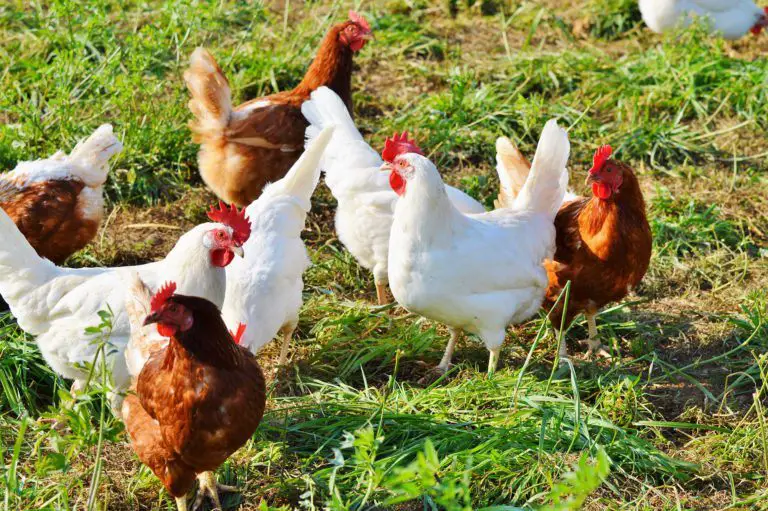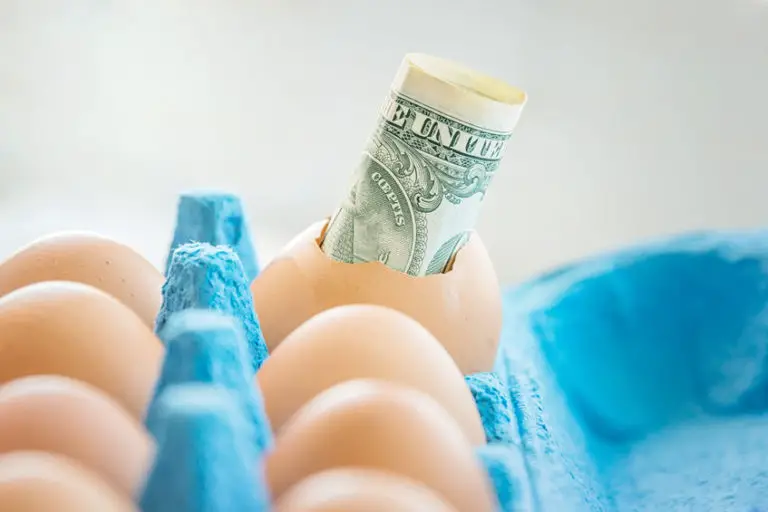Homemade Chicken Scratch Recipe – The Perfect Mix For Your Flock
Those bags of feed store chicken scratch may not be ideal to give your chickens. If you want your chickens to be at their best, you’ll want to read this. We provide the perfect healthy homemade chicken scratch recipe for your brood!
We’ll discuss what chicken scratch is, how it differs from chicken feed, whether it’s good for your chickens, and look at the differences between homemade and store bought chickens scratch. Many flock owners are curious about soy vs corn in their scratch mix so we’ll delve into that as well. Lastly, we’ll leave you with a yummy organic scratch recipe for your feathered friends!
For information on homemade chicken feed, read this article.
What Is Chicken Scratch?
If you are new to raising chickens, it’s fairly easy to confuse chicken scratch for feed. Chicken scratch is nothing more than a snack or treat. The only purpose it serves our chickens is a way to satisfy their foraging instinct. Most chicken scratches are higher in fiber but lower in protein.
A healthy feed should suffice as the only source of food; however, many chicken owners like to provide their beloved chickens with a treat here and there.
So, why do they call it chicken scratch? Because when chickens forage, they peck and scratch at the ground to dig up insects and other delightful delicacies.
Chicken scratch is grained-based (rolled, cracked, and whole) and almost always has grit added. It’s those grains that we want to take a look at because when it comes to making your own scratch, it’s beneficial to know what is good and not-so-good to use for ingredients. Now, remember, this is not homemade chicken feed, but a homemade chicken scratch.
To keep the two separate, it helps to think of feed as a balanced meal that has necessary vitamins and minerals. Scratch, on the other hand, is a snack or treat that isn’t nutritionally balanced, and if the wrong ingredients are used, it is nothing more than junk food for chickens.

Is Chicken Scratch Good For Chickens?
Simply put, no chicken scratch is not a required part of a chicken’s diet and offers no nutritional value. It’s about the same thing as us sitting down to have a slice of indulgent chocolate cake or that bowl of ice cream.
It’s just that, an “indulgence.” As humans, we choose to give our chickens scratch because deep down; it’s a form of nurturing them, just as giving Johnny a chocolate chip cookie fresh from the oven after getting home from school.
Unfortunately, there are some chicken owners who opt to feed their chickens with scratch rather than feed because a scratch is much cheaper. Trust us; you don’t want to do this because your chickens will suffer from malnutrition, develop health problems, and could end up dying as a result.
Chicken scratch should be fed in small portions every now and then. Because scratch is grain-based, when feeding it to them, keep it to 10% or less of their daily diet. Otherwise, they will begin to grow fat, be more prone to sickness, and produce low-quality eggs.
Because it’s difficult to figure out how much that 10% is, it’s easier to feed about a palm-size portion of scratch for each chicken.
Controversy Over Corn And Soy
There’s quite a bit of debate over whether corn and soy should be fed to chickens or not. Corn is a carbohydrate that provides a source of energy. Although corn is not fully digestible by chickens, most of the sugars and starches are. Corn is a mainstream ingredient in poultry feeds and scratches. Too much corn consumed by chicken leads to becoming fat.
Soy, on the other hand, is also a mainstream ingredient in chicken feed. Soy provides a source of unsaturated fat and protein. For chickens to absorb certain vitamins (A, D, E, K), they must have an intake of fat. Because many humans have a soy allergy, they are unable to consume eggs or meat produced by a chicken that has consumed soy. Chicken owners who have such a family member choose not to include soy in feed or scratch.
Researchers who conducted a study on feeding a soybean-based diet to chickens reported that chickens could not fully digest it, causing it to ferment in the small intestine. Yet another reason why many chicken owners don’t feed corn or soy to their chickens is because 90% of U.S. corn and soy crops are genetically engineered.
When looking for a good-quality grain for chicken scratch or feed, it’s important to find a product made with ancient (non-altered) grains.

Homemade Vs. Commercial Chicken Scratch
A homemade chicken scratch made with the right grains and some added protein provides chickens a more organic, non-GMO, chemical-free nutritional treat.
Commercial chicken scratch is typically corn-based and most likely contains genetically engineered grains that may be laced with herbicides or other chemicals. The old cliche “You are what you eat” applies to anything you feed your chickens because if you are consuming their eggs or meat, you are taking in those very things they ate.
We don’t know about you, but we’d much rather have a source of eggs and meat produced by chickens who haven’t consumed chemicals or altered grains.
Organic, Non-GMO Small-Flock Chicken Scratch Recipe
Finding organic, non-GMO ancient grains isn’t too difficult. Amazon is a starting point to find your ingredients. Be prepared to pay extra for healthier ingredients. If you have a larger flock, simply increase the amounts of ingredients.
Homemade Chicken Scratch Ingredients
- 1 cup of dried wheat berries
- 1 cup of dried rye berries
- 2 cups of sunflower seeds
- 2 cups of dried soldier fly larvae
- 2 cups of groats
- 2 cups of barley
Mix all ingredients together and store in an airtight container placed in a dark, cool place. Feed around a palm-full of scratch per chicken.
The Last “Cluck”
Chicken scratch should be “scratched off” of the list of things you feed your chickens; just be sure to feed in moderation.
Be careful to source your grains from a reputable retailer and check to see that they are organic, non-GMO, and made from ancient grains. It’s ok to spoil your chickens a little with a wholesome treat!
Our recipe above is one of many variations of healthy scratch mix and the ingredients can be scaled up if you have a larger flock.
We love feeding it to our flock. Not only do they love it, it’s a great way to connect with our brood. The same will happen for you! Before you know it, every time you head to the coop, they’ll come running!
Thanks for stopping by and Happy ‘Chickening.’







